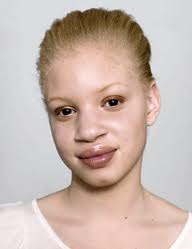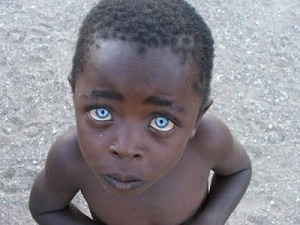What You Should Know About Albinism

It would be great if society would try and understand the background of albinism. In that way, we can be sensitive and tolerant with Albino people, in that way they won’t feel discriminated against. Albinism occurs when one of several genetic defects makes the body unable to produce or distribute melanin, a natural substance that gives color to your hair, skin, and iris of the eye. Albinism can also be genetic.
People with albinism are often socially isolated, because the condition is often misunderstood. They face social and cultural challenges. In communities of color there can be social stigmatization. Old beliefs about people with albinism still exist in different cultures around the world. It is vital that societies in general and communities must make an effort not to exclude people with albinism.
What causes Albinism?
A person inherits one or more defective genes that cause them to be unable to produce the normal amounts of a pigment called melanin. Several different genes are involved in albinism, depending on the specific type. Researchers have identified several genes that result in albinism. The genes are located on “autosomal” chromosomes. Autosomes are the chromosomes that contain genes for general body characteristics. Genes carry the information that makes you an individual. We normally have two copies of these chromosomes and genes: one inherited from our father, the other inherited from our mother. Albinism is a “recessive trait” – a person without albinism can carry the albinism trait. Both parents must carry a defective gene to have a child with albinism. When neither parent has albinism but both carry the defective gene, there is a one in four chance that the baby will be born with albinism.
They are two types of Albinisms:
- Type 1 which is caused by faults that effect the production of the skin pigment, melanin
- Type 2 which is caused by a faults in the “P” gene. People with this type have slight coloring at birth.
- The most severe form of albinism is called oculocutaneous albinism. People with this type of albinism have white or pink hair, skin, and iris color, as well as vision problems.
- Hermansky-Pudlak syndrome (HPS) is a form of albinism caused by a single gene. It can occur with a bleeding disorder, as well as with lung and bowel diseases.
People with Albinism experience the following problems
Vision problems
Their vision capacity may be low. Vision problems in albinism result from abnormal development of the retina and abnormal patterns of nerve connections between the eye and the brain.
Skin problems
People with many types of albinism need to take precautions to avoid damage to the skin caused by the sun such as wearing sunscreen lotions, hats and sun-protective clothing. They have very sensitive skin towards the sun
What are the treatment options for Albinism?
Treatments and aids can help the symptoms and reduce the risk of damage to the skin and eyes.
Precautions in avoiding exposure to UV light, using high-factor sunscreen, protective clothing and hats are essential. Coping with eye problems can be achieved by seeking advice from optometrists and ophthalmologists. Surgery may be required on the ocular muscles to decrease some of the vision problems. Treatment of the eye conditions consists of visual rehabilitation. Vision aids, such as glasses, bifocals, prescription reading glasses, magnifiers or monoculars, colored contact lenses, bright reading lights, can help individuals with albinism. Some people use bioptics – glasses with small telescopes mounted on. Some individuals use screen magnification products on computers.
Prenatal Testing
For couples who have not had a child with albinism, there is no straightforward test to determine whether a person carries a defective gene for albinism. Large genetic studies on albinism have been inconclusive, making it look less likely that, at least for the medium-term, effective genetic tests are possible. In the case of parents who already have a child with albinism. It is possible to test using either introducing a needle into the uterus to draw off fluid or chorionic villous sampling (CVS). Cells in the fluid are examined to see if they have an albinism gene from each parent.







